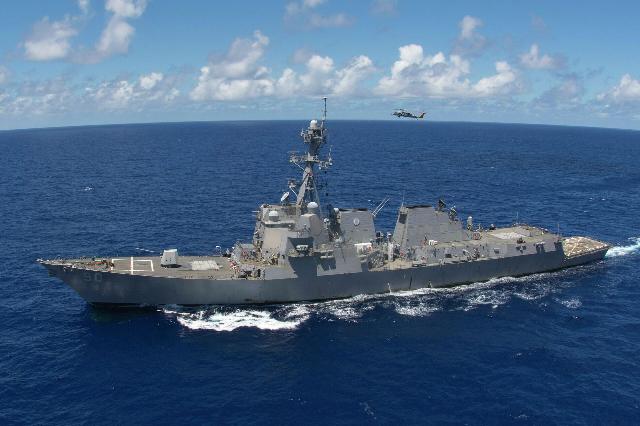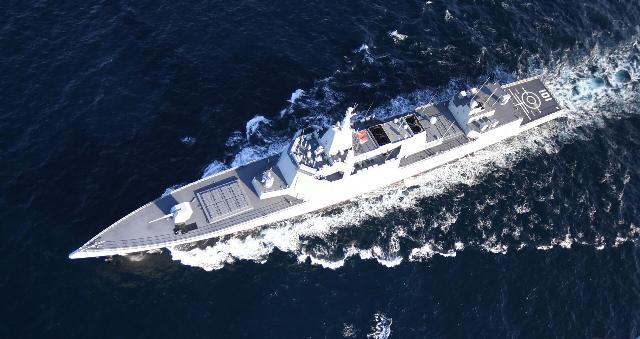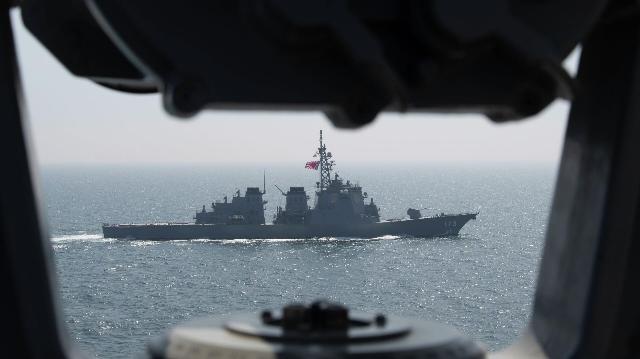The Pentagon delays the construction of the flagship frigate Constellation for three years
MOSCOW, Apr 15 — RIA Novosti, Andrey Igorev. The Pentagon shifts the deadline for the adoption of a new class of ship: the lead frigate with guided missile weapons of the Constellation type will be transferred to the fleet not in 2026, but in 2029. The reasons for the delay are design flaws, sluggishness of suppliers and difficulties in finding qualified workers. About the current problems of American shipbuilding — in the material of RIA Novosti.
The European Project
Frigates have been absent from the US Navy as a class since 2015, when the Pentagon decommissioned the last of the 51 pennants of the Oliver Hazard Perry project. The Americans planned to replace them with littoral combat ships (LCS — Littoral combat ship) of the Freedom and Independence types, and even launched mass production. However, it quickly became clear that these ships have a lot of "childhood diseases" — from design imperfections to problems with the main power plant. As a result, they began to massively send "littoral guards" to the reserve, who had not served for ten years. And the fleet, in fact, was left without light escort ships.
Developing a new pennant from scratch would take too much time, so in 2018, the Pentagon chose an existing solution. The Americans announced a competition, and two years later the largest Italian shipbuilding company Fincantieri won with a FREMM-type frigate project. In April 2020, the concern received a contract for $ 795 million for the detailed design and construction of the lead ship for the US Navy with an option for another nine million.
Nineteen pennants of the FREMM project since the beginning of the 2010s have become part of the Italian Navy (Bergamini subclass) and France (Aquitaine subclass). These subclasses are designed for anti-submarine and anti-aircraft defense, the destruction of surface ships and attacks on enemy ground targets. The superstructure of both is made using stealth technology, which reduces radar visibility. The design of both Bergmini and Aquitaine is modular — this allows you to quickly modify the pennant for a specific task. The displacement of the ships is 5,800 tons.
The frigates of the two countries are similar in appearance, but they have different radars and air defense systems, power plants and weapons composition. For example, only the French have surface—to-surface missiles (SCALP-Naval in 16 cells of vertical launch units). The Italians considered that two 127 and 76 mm caliber gun mounts would be enough, therefore, on their frigates, the place in the bow reserved for the UVP is still empty.

LCS Independence Frigate
Image source: © Photo : public domain / U.S. Navy photo by Naval Air Crewman 2nd Class Nicholas Kontodiakos
Italian subclass
The Italian Bergamini subclass was chosen as the base for the promising American frigate of the Constellation project. In August 2022, at the American shipbuilding company Fincantieri Marinette Marine Shipyard in Marinette (Wisconsin) The ceremony of the first steel cutting took place, marking the beginning of the construction of the lead ship. It seemed to the Americans that it was not enough just to copy the Italian design, so the initial project was seriously changed.
The American frigate has a total design displacement of 7,300 tons, a maximum length of 151.18 meters and a width of 19.81 meters. For the first time in the practice of the US Navy, the ship will be equipped with a combined diesel-electric-gas turbine (CODLAG) main power plant. On board is a lightweight version of the AN/SPY—6 anti-aircraft and missile defense radar, which is now being installed on the Arleigh Burke Flight III destroyers.
Armament — 32-charging Mk 41 universal launcher (with Standard SM-2 Block IIIC, Standard SM-6 ERAM and ESSM Block 2 types of missiles), 16 NSM anti-ship missile launchers, one 21-charging Mk 49 RAM Block 2 self-defense SAM, 57 mm artillery gun Mk 110, 324- millimeter torpedo tubes. In the hangar there is a Sikorsky MH—60R Seahawk anti-submarine helicopter and one or two Northrop Grumman MQ-8C Firescout unmanned helicopters.
And this is not a complete list of the differences between Bergamini and Constellation.

The destroyer USS Chafee
Image source: © Photo : U.S. Navy photo by Mass Communication Specialist Seaman Clemente A. Lynch
A set of problems
To sum up, the Americans tried to cram almost all their naval novelties into the already limited space of FREMM. Instead of the initial 85 percent similarity with the Italian prototype, 15 percent remained from the original technical specification. And all because of the excessive demands of the Pentagon, which seeks to turn a relatively small pennant into a universal soldier.
Constellation, according to the idea of the leadership, will have to hit enemy surface ships at over-the-horizon range, detect and destroy submarines, protect escorted ships, use active and passive electronic countermeasures systems, defend against attacks by small surface ships, cover the marine landing with fire. A task list more suitable for a destroyer or cruiser than a frigate. Unsurprisingly, shipbuilders faced a number of serious problems and limitations.
Firstly, the US naval shipbuilding industry is experiencing a serious personnel crisis, which is aggravated by competition in the main industries for skilled workers. The shipyards simply do not have enough trained specialists.
In addition, the Marinetta shipyard is relatively young and has experience in building only littoral combat ships, but not frigates. Secondly, the coronavirus pandemic disrupted many production chains and cut off important suppliers from the Constellation program. Thirdly, due to constant changes in the project, the cost of the lead ship has increased to $ 1.3 billion.
But the main problem is that the Americans, in fact, have forgotten how to make ships for naval warfare with an equal or close enemy. Almost 30 years of complete absence of rivals at sea have borne fruit. A whole generation of officers and designers has grown up, accustomed to the fact that the United States is no longer fighting "like an adult", and their main opponent is poorly armed militants. In addition, the desire to cram all the best into promising units at once seriously increases the construction time and reduces the size of the series. A striking example is the ultra—modern Zumwalt destroyers, in the development of which the Pentagon has invested years and many billions, exist today in the amount of only three pennants.

The destroyer Nan Chang of the Chinese Navy during maneuvering in the exercise "Maritime Interaction — 2021"
Image source: © RIA Novosti / Vitaly Ankov
In the conditions of a great war, mass character becomes much more important than uniqueness and sophistication. This is well understood in China, which Washington has called the main geopolitical opponent. The shipyards of China have long surpassed the American ones in terms of productivity and launch relatively inexpensive, simple, but effective ships with enviable frequency.

